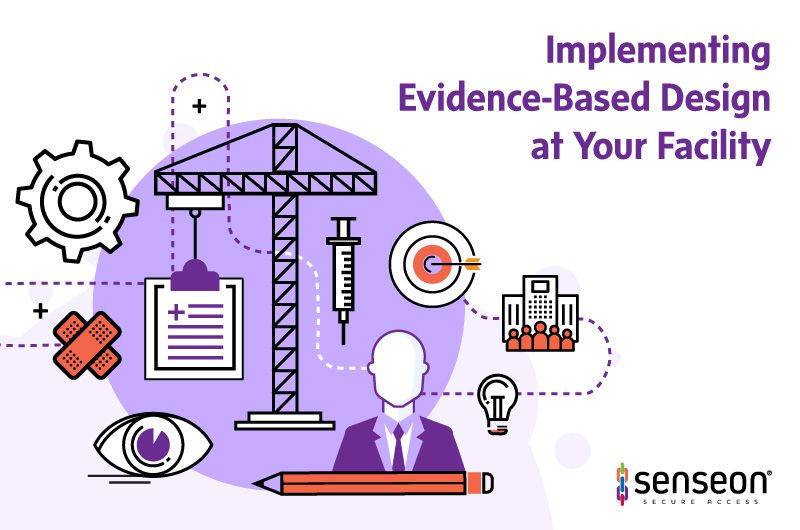- Cultural change is crucial to successful evidence-based design initiatives.
- Strategic processes and outside help can be useful in achieving cultural change.
- CEOs have a unique and critical role in evidence-based design initiatives and can be especially effective when implementing specific, evidence-based design strategies.
So you love the idea of evidence-based design (EBD). You have a clear picture of how it will help your hospital reduce costs and provide an overall safer and better patient experience. That’s a great first step in implementing an effective EBD program. Now comes the most challenging part, and that’s implementation.
While the benefits are clear to many healthcare organizations across the country (your competitors included), getting an organization to move can be complicated. That’s why it’s so important to take the right first steps as the foundation of your EBD initiatives.
Evidence-Based Design Starts with Culture Change
While EBD mostly impacts the physical environment, other changes start much deeper.
For many organizations, the change it takes to implement EBD initiatives will be challenging. This is especially true for older organizations who might have established cultures. What matters most though, is that all stakeholders in the organization understand that EBD represents large-scale, positive change that will improve their work environments and results for their patients.
Some hospitals have hired an organizational consultant to help them make the transition. For example, a hospital in Baltimore was suffering from dysfunction, a lack of safety, and overall inefficient processes. Staff morale was terrible, and some areas in the hospital were described as “hazardous and depressing.”
With the help of the consultant and collaboration with an open-minded architect, they were able to achieve true cultural and facility change with the bonus of improvement to the CEO’s reputation.
The Center for Health Design suggests the following process for achieving cultural change:
- Set a path to assess the current culture
- Making a commitment to establish urgency and need for change
- Identifying broad-base champions
- Developing vision and plans
- Implementing organizational changes
- Measuring progress
- Building on progress
- Sustaining momentum
This optimization process, as well as the white paper that covers it, can be used to prompt discussion, input, and reflection from everyone involved. The process should be used as an addition to other tools of cultural change including listening tours, focus groups, surveys, and one-on-one discussions.
The CEO Plays a Vital Role in Successful EBD Programs
The idea that change starts at the top is proven to be true over and over, and the same goes for evidence-based design.
The CEO sits in a unique position in the EBD process. They can break down silos and work across specialties and departments. This gives them the power to keep the EBD process flowing and enable the agility an organization needs to achieve increases in safety, quality, and efficiency.
While many aspects of the EBD process are outsourced (e.g., project planning and development) or handled by internal teams, even the most skilled staff can’t make up for the leadership role the CEO and other senior executives play.
CEOs are the driving force behind an effective evidence-based design, and should consider implementing the following ten strategies in their own EBD work:
- Start from a problem perspective and work to challenge existing paradigms
- Implement an integrated, multidisciplinary approach that leverages consistent senior involvement
- Strive to maintain a patient-centered approach that also involves families
- Keep an eye on financial operating impacts
- Incorporate a disciplined, broad approach to participation and criteria management
- Establish quantitative criteria and link them to incentives
- Leverage strategic partnerships to accelerate innovation
- Demand and support simulation and testing throughout the process
- Look at things from a lifecycle perspective
- Overcommunicate
While these strategies can be complex and difficult to implement, the history of evidence-based design has proven that they can be the source of continuous improvement in quality and safety. This is especially true when they’re coordinated with clinical and operational process improvements that are also founded on cultural change.
Remember: evidence-based design is about shifting your thinking and learning to see a facility as not just a cost center. Instead, look at it as an integral part of the future of your organization’s growth and your patient experience.
To learn more about helping your facility take another step in becoming the hospital of the future, review our series on evidence- based design.






